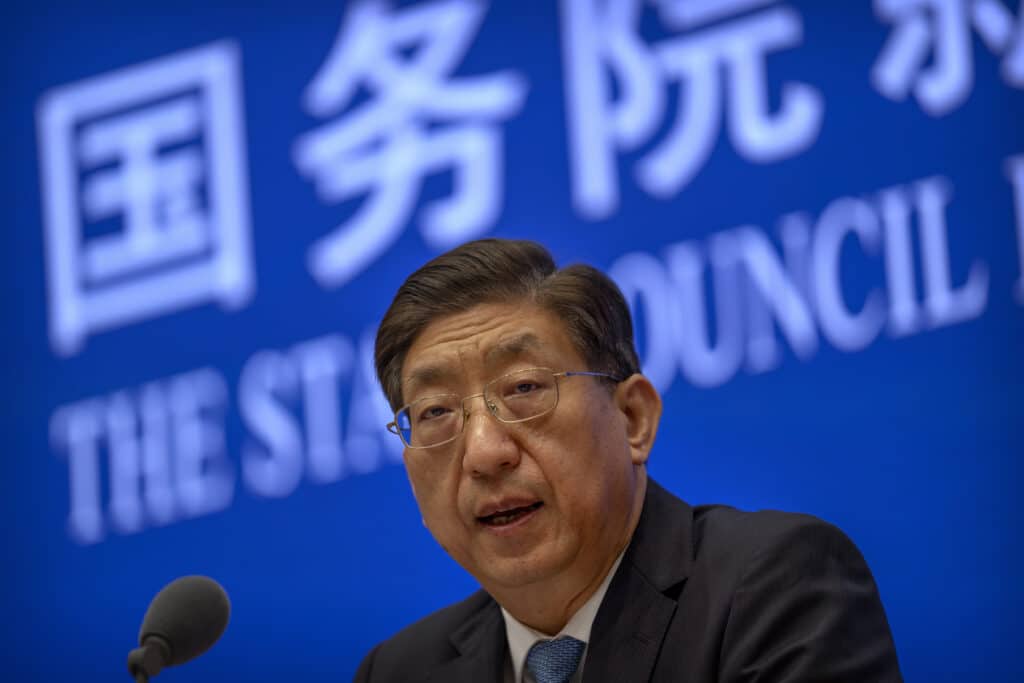As the world has seen in the last year, China is still protecting its roll in the global pandemic. The search for the origins of the virus have become mostly a diplomatic issue. The Associated Press has the story:
The WHO’s virus tracing plan could help determine exactly where the pandemic started
BEIJING (AP) — China cannot accept the World Health Organization’s plan for the second phase of a study into the origins of COVID-19, a senior Chinese health official said Thursday.
Zeng Yixin, the vice minister of the National Health Commission, said he was “rather taken aback” that the plan includes further investigation of the theory that the virus might have leaked from a Chinese lab.

He dismissed the lab leak idea as a rumor that runs counter to common sense and science.
“It is impossible for us to accept such an origin-tracing plan,” he said at a news conference called to address the COVID-19 origins issue.
The search for where the virus came from has become a diplomatic issue that has fueled China’s deteriorating relations with the U.S. and many American allies. The U.S. and others say that China has not been transparent about what happened in the early days of the pandemic. China accuses critics of seeking to blame it for the pandemic and politicizing an issue that should be left to scientists.
Tedros Adhanom Ghebreyesus, the director-general of WHO, acknowledged last week that there had been a “premature push” after the first phase of the study to rule out the theory that the virus might have escaped from a Chinese government lab in Wuhan, the city where the disease was first detected in late 2019.

Most experts don’t think a lab leak is the likely cause. The question is whether the possibility is so remote that it should be dropped, or whether it merits further study.
The first phase was conducted earlier this year by an international team of scientists who came to Wuhan to work with their Chinese counterparts. The team was accused of bowing to demands from the Chinese side after it initially indicated that further study wasn’t necessary.
Zeng said the Wuhan lab has no virus that can directly infect humans and noted that the WHO team concluded that a lab leak was highly unlikely. He added that speculation that staff and graduate students at the lab had been infected and might have started the spread of the virus in the city was untrue.
Yuan Zhiming, the director of the biosafety lab at the Wuhan Institute of Virology, said they had not stored or studied the new coronavirus before the outbreak. “I want to emphasize that …. the Wuhan Institute of Virology has never designed, made or leaked the novel coronavirus,” he said.

The WHO team concluded that the virus most likely jumped from animals to humans, probably from bats to an intermediate animal. The experts visited markets in Wuhan that had sold live animals, and recommended further study of the farms that supplied the market.
“In the next step, I think animal tracing should still be the priority direction. It is the most valuable field for our efforts,” Liang Wannian, who headed the Chinese side, said at Thursday’s news conference.
Tedros said last week that he hoped for better cooperation and access to data from China. “We are asking China to be transparent, open and cooperate, especially on the information, raw data that we asked for in the early days of the pandemic,” he said.

His words were echoed at the same virtual news conference by Germany’s health minister, Jens Spahn, who called on China to intensify cooperation in the search for the origin of the virus.
Zeng said China has always supported “scientific virus tracing” and wants to see the study extended to other countries and regions. “However, we are opposed to politicizing the tracing work,” he said.
China has frequently sought to deflect accusations that the pandemic originated in Wuhan and was allowed to spread by early bureaucratic missteps and an attempted coverup.

Government spokespersons have called for an investigation into whether the virus might have been produced in a U.S. military laboratory, a theory not widely shared in the scientific community.
China has largely ended local transmission of COVID through lockdowns and mask-wearing requirements, and has now administered more than 1.4 billion doses of Chinese vaccines. Just 12 new domestically spread cases were reported Thursday and China’s death toll from the virus has remained unchanged for months at 4,636.






